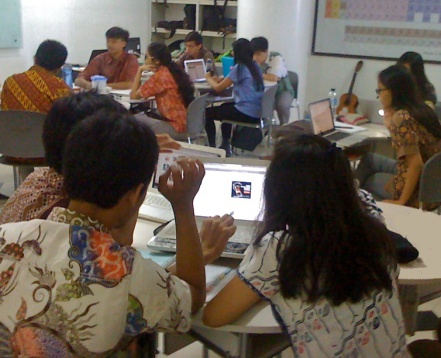How many teachers make movies for Youtube, run a Facebook page, blog, Twitter account, Instagram account, etc for a cause, and/or collaborate through Skype or social media, and/or have their own web page, weebly, wiki, etc?
It’s been more than ten years since Sir Ken Robinson reminded us that schools could be doing a bit more than funnelling young people through to universities. As well, a lot of work has been done on what education should look like this century, and governments are getting on board the creativity/innovation bandwagon.
In New South Wales, a reminder about the importance of 21st century skills was quickly followed by criticism of some of those skills in beginning teachers. Between them, these articles point us towards the real “blockers” of creativity and/or innovation education – governments, often aided and abetted by school administrators and, in too many cases, teachers themselves.
The “4 C’s” of 21st century education, i.e.: creativity, critical reflection, collaboration and communication, cannot happen in classrooms in which syllabuses are rigidly followed, teachers control what is learned and students answer questions but rarely pose them. However, even in classrooms in which there is the best will in the world to adopt pedagogy that inspires innovation, strictures from above make it almost impossible for the teachers.
Three of the 4 C’s, creativity, collaboration and communication are greatly facilitated by digital technology. Students can use devices and apps to make movies, blogs, podcasts, web pages, etc. They have the tools to collaborate with their immediate friends and anyone, anywhere on the planet. They have the ability to communicate with audiences of millions.

The problem is that the majority of students are hamstrung by adults who have little knowledge and skills in using technology but who have all the decision-making power to ban some of the most effective tools for creating, collaborating and communicating. For example, Youtube, Facebook and Twitter are blocked in many, many schools around the globe by adults who do not use them themselves, and fear the harm that they have heard might be done to students.
A major aspect of teaching young people the 4th C of critical thinking is to teach them how to use technology, including the internet, ethically and responsibly. If teachers (all teachers) can also use technology ethically and responsibly then they are able to guide and supervise young people, and help them recover from any problems that arise.
History demonstrates that banning anything is futile. In the case of banning tools that are perceived to be “harmful”, but are essential for learning creativity and innovation, there are two serious issues:
- young people will want to test the limits of anything that is banned, and, if they have not been taught to use such things wisely, the chances of them being harmed when, not if, they use them is maximised
- politicians and administrators who ban “harmful” internet applications are deluding themselves – any teenager can simply “hot spot” their laptop to a phone in their pocket, and only teachers who knows how to do this themselves will pick it up.
If we really want young people to be creative and innovative, let them make movies for Youtube and get feedback about them, make and follow Facebook pages and Instagram and Twitter accounts to communicate and find out things and collaborate through Twitter, Skype and Facebook.
It is often said, derisively and erroneously, by those who do not appreciate the dedication and skills of teachers, that “those who can’t, teach”. In the case of teaching for creativity and innovation, “those who teach, must” if we really want young people to learn the 4 C’s.
